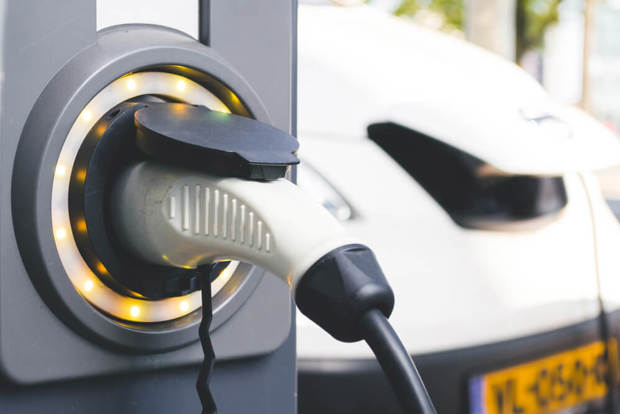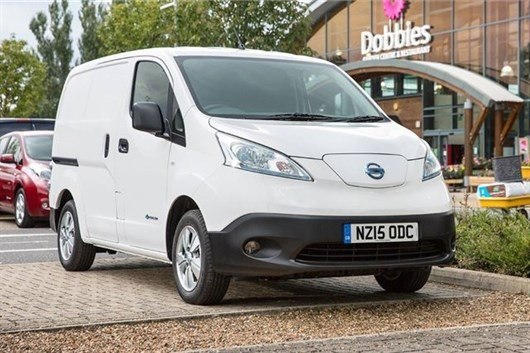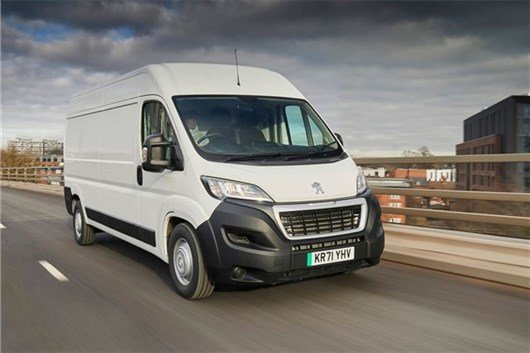Government extends plug-in van grant to 2024/25

The Government has extended the plug-in van and truck grants for an additional two years, until 2024/25, and changed the eligibility criteria.
The grants are designed to encourage take up of electric vehicles (EVs) by giving buyers a discount on the price of a new EV.
In December 2021 the Government slashed the plug-in car grant from £2,500 to £1,500 and cut the plug-in van grant from £3,000 to £2,500 for small vans with a 2.5 tonnes gross vehicle weight (GVW).
For larger vans (2-3.5 tonnes GVW) the grant was reduced from a maximum of £6,000 to £5,000.

Grant rates remained the same for vehicles over 3.5 tonnes.
However, in announcing the two-year extension to the plug-in van and truck grants, the Government also said that the eligibility criteria will be recategorised from the spring with a focus on heavier vehicles to "target support where it's most needed".
From 1 April 2022 the threshold to claim the small truck grant of up to £16,000 will be increased from 3.5 tonnes to 4.25 tonnes.
Vans up to 4.25 tonnes will be able to claim the large van grant of up to £5,000.

Nearly five per cent of the UK’s CO2 emissions currently come from vans and the changes to the grant come ahead of the 2030 phase-out of new petrol and diesel cars and vans , as part of the UK's legal requirement to achieve net zero carbon emissions by 2050.
"This extension will allow tens of thousands more vans to be purchased." Transport minister Trudy Harrison
Transport minister Trudy Harrison said: "As demand for electric vehicles continues to grow at speed, this extension to our grant scheme will allow tens of thousands more vans to be purchased, transporting goods in a way which is kinder to our environment.
"This will support our vital, ongoing work to clean up our air in towns and cities right across the country and build back greener."
As well as the extension to grant schemes, the Government also announced it will continue to allow drivers holding standard car driving licences to drive electric goods vans at a higher weight limit, up to 4.25 tonnes (compared to a 3.5 tonne limit for diesel vans).
This takes into account the additional weight of electric vehicle batteries.
Which small vans qualify for the plug-in van grant?
Small vans (with a 2.5 tonnes gross vehicle weight) with CO2 emissions of less than 50g/km and can travel at least 96km (60 miles) without any emissions at all qualify for the plug-in van grant.
These vehicles are:
- Citroën e-Berlingo
- Maxus eDeliver 3 (short wheel base variants)
- Nissan e-NV200
- Nissan Voltia
- Peugeot e-Partner
- Renault Kangoo ZE
- Renault Zoe Van
- Toyota Proace City Electric
- Vauxhall Combo-e
Which large vans qualify for the plug-in van grant?
Large vans (2-3.5 tonnes gross vehicle weight) with CO2 emissions of less than 50g/km and that can travel at least 96km (60 miles) without any emissions at all qualify for the plug-in van grant
These are:
- BD Auto eTraffic
- BD e-Boxer
- BD e-Ducato
- BD e-Relay
- Citroën e-Dispatch
- Citroën e-Relay
- Fiat e-Ducato
- Innovation Automotive DFSK EC35 T2
- LEVC VN5
- MAN eTGE
- Maxus eDeliver 3
- Maxus eDeliver 3 LWB Chassis Cab
- Maxus eDeliver 9
- Maxus eDeliver 9 MC L3 Chassis Cab
- Maxus eDeliver 9 LC L4 Chassis Cab
- Mercedes-Benz eVito
- Mercedes eSprinter
- Peugeot e-Boxer
- Peugeot e-Expert
- Renault Master ZE (3.1 and 3.5 tonnes)
- Renault Trucks Master ZE
- Toyota Proace Electric
- Vauxhall Vivaro-e
- Volkswagen ABT e-Transporter
- LDV EV80
Should I buy a high-mileage Ford Transit Custom?

Will I be able to drive my Volkswagen Grand California after 2030?


